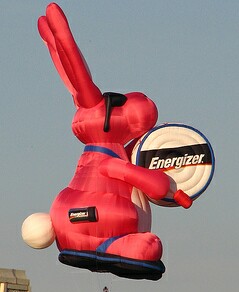


|

|
|
|
Home |
The Mil & Aero Blog
 Posted by John Keller If there's anything that military forces can never get enough of it's electrical power. Radios, night-vision goggles, wearable computers, and rugged PDAs are heavy enough to carry into the field, but today's fighting forces have to lug along enough batteries to keep their portable electronics running. Lives can depend on reliable batteries. It's a never-ending challenge to design batteries that have enough juice for the missions at hand, but that don't break the soldier's back in practical use. One of the latest and most promising developments in battery technology is the lithium-ion (Li-ion) cell. There is a lot of power in one of these batteries. One problem with Li-ion batteries, however, is safety. Overcharging these batteries can convert the lithium oxide to metallic lithium, which raises the danger of overheating, or even explosion. I think most soldiers would agree, the battlefield is dangerous enough without this threat. Now researchers in Spain and the United Kingdom are developing an electrode material that could ease concerns about exploding Li-ion batteries, and increase the power storage capacity of these batteries, as well, reports Physorg.com in a story entitled New electrodes may provide safer, more powerful lithium-ion (Li-ion) batteries. Reports Physorg.com: In the new study, M. Rosa Palacín and colleagues compared the performance of Li-ion batteries made with electrodes composed of lithium nickel nitride (LiNiN) to conventional Li-ion batteries containing carbon electrodes. The new materials are more efficient than the conventional electrodes and less likely to overheat, the researchers suggest. They note that “further improvements can be envisaged by changing the reaction conditions and the processing of the electrode.” The Palacin paper, entitled Towards New Negative Electrode Materials for Li-Ion Batteries: Electrochemical properties of LiNiN, is available in .pdf form for those who want to do a deep dive. Anything that could help lighten the load will be good news to combat troops in the field. Perhaps these new batteries may become available to them before more exotic technologies that might be able to do things like generate electrical power from body heat. 0 Comments:
<< Home |
Welcome to the lighter side of Military & Aerospace Electronics. This is where our staff recount tales of the strange, the weird, and the otherwise offbeat. We could put news here, but we have the rest of our Website for that. Enjoy our scribblings, and feel free to add your own opinions. You might also get to know us in the process. Proceed at your own risk. 
John Keller is editor-in-chief of Military & Aerospace Electronics magazine, which provides extensive coverage and analysis of enabling electronic and optoelectronic technologies in military, space, and commercial aviation applications. A member of the Military & Aerospace Electronics staff since the magazine's founding in 1989, Mr. Keller took over as chief editor in 1995.  Courtney E. Howard is senior editor of Military & Aerospace Electronics magazine. She is responsible for writing news stories and feature articles for the print publication, as well as composing daily news for the magazine's Website and assembling the weekly electronic newsletter. Her features have appeared in such high-tech trade publications as Military & Aerospace Electronics, Computer Graphics World, Electronic Publishing, Small Times, and The Audio Amateur.
Courtney E. Howard is senior editor of Military & Aerospace Electronics magazine. She is responsible for writing news stories and feature articles for the print publication, as well as composing daily news for the magazine's Website and assembling the weekly electronic newsletter. Her features have appeared in such high-tech trade publications as Military & Aerospace Electronics, Computer Graphics World, Electronic Publishing, Small Times, and The Audio Amateur.
 John McHale is executive editor of Military & Aerospace Electronics magazine, where he has been covering the defense Industry for more than dozen years. During that time he also led PennWell's launches of magazines and shows on homeland security and a defense publication and website in Europe. Mr. McHale has served as chairman of the Military & Aerospace Electronics Forum and its Advisory Council since 2004. He lives in Boston with his golf clubs.
John McHale is executive editor of Military & Aerospace Electronics magazine, where he has been covering the defense Industry for more than dozen years. During that time he also led PennWell's launches of magazines and shows on homeland security and a defense publication and website in Europe. Mr. McHale has served as chairman of the Military & Aerospace Electronics Forum and its Advisory Council since 2004. He lives in Boston with his golf clubs.
Previous Posts
Archives
|
|||||
Internet gems
THE MAE WEBSITE AUTHORS ARE SOLELY RESPONSIBLE FOR THE CONTENT AND ACCURACY OF THEIR BLOGS, INCLUDING ANY OPINIONS THEY EXPRESS, AND PENNWELL IS NOT RESPONSIBLE FOR AND HEREBY DISCLAIMS ANY AND ALL LIABILITY FOR THE CONTENT, ITS ACCURACY, AND OPINIONS THAT MAY BE CONTAINED HEREIN. THE CONTENT ON THE MAE WEBSITE MAY BE DATED AND PENNWELL IS UNDER NO OBLIGATION TO PROVIDE UPDATES TO THE INFORMATION INCLUDED HEREIN.
|
||||||
|
|
Home | About Us | Contact Us | Corporate Website | Privacy Policy | Courage and Valor Foundation | Site Map
Also Visit: Laser Focus World | Vision Systems Design | Industrial Laser Solutions Copyright © 2007: PennWell Corporation, Tulsa, OK; All Rights Reserved. | Terms & Conditions | Webmaster |